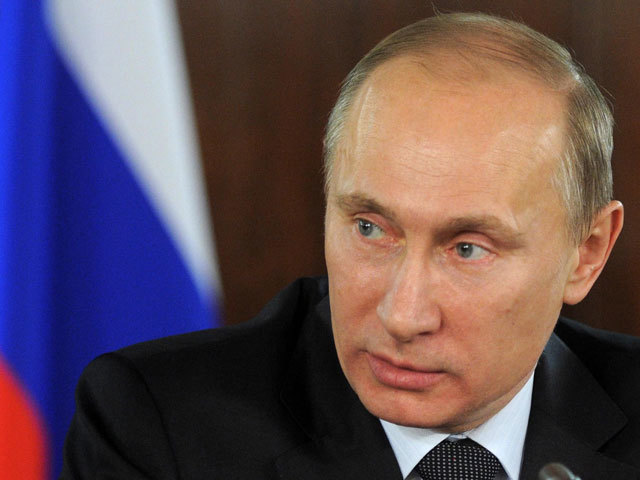
For an economy that lives and dies by crude prices, the latest downturn in the world oil market means Russia’s recession may stretch into next year for the longest slump in two decades.
Russia’s first economic slump since 2009 looked like it would plateau as oil gained 40 percent from a six-month low in January. Crude’s recovery has faltered in recent weeks, raising questions about government assurances that the economy will return to growth in 2016 and further squeezing a budget already on course for its widest deficit in five years.
Oil jitters will test the optimism of President Vladimir Putin, who’s declared that Russia had put the worst of the economic crisis behind it, and heap pressure on his regime before early parliamentary elections in September next year. Russia, which ING Bank NV estimates needs oil at $80 a barrel to balance its budget, will endure a two-year economic contraction if crude prices remain at $60 through 2016, according to the central bank.
“Russia will face a recession or stagnation next year” if oil is near $50, Dmitry Polevoy, a Moscow-based economist at ING, said by e-mail. “It will likely be necessary to cut spending more, to postpone a part of military spending and to use what remains in the Reserve Fund.”
Reeling from a currency collapse last year and sanctions over Ukraine, the government has already cut budget outlays by 10 percent and dipped into one of its sovereign wealth funds, the Reserve Fund, to help cover the shortfall. Lower oil prices mean that Russia may potentially need financing from its other wealth fund, the National Wellbeing Fund, according to Polevoy.
The most severe stress test conducted by the central bank, which assumed oil at $40 and an economic slump of 7 percent, found that 187 lenders may face a capital shortage of 0.6 trillion rubles ($11 billion) while the share of non-performing loans more than doubles to 17.7 percent. The economy will contract for a third year in 2017 if oil remains at $40, the central bank said in June.
The government predicts economic growth at 2.3 percent in 2016 after improving this year’s forecast to a 2.8 percent drop from a previously projected decline of 3 percent. Growth averaged 7 percent during Putin’s first two terms as president in 2000-2008.
“Another oil price shock may exacerbate the recession and/or prolong it,” Tatiana Orlova, the chief Russia economist for Royal Bank of Scotland Group Plc in London, said in a report last week.
“Although we currently expect the economy to post very modest growth of 0.5 percent in 2016, we think the economy may remain in recession throughout next year if the average Brent oil price remains below $60.”
Brent crude, used to price about half of the world’s oil including Russia’s main export blend Urals, lost 0.7 percent to $56.64 as of 12:34 p.m. in Moscow. It’s averaged about $59 this year.
The ruble, which plunged 46 percent against the dollar last year, weakened 0.2 percent to 57.0750 against the U.S. currency. It’s the second-worst performer in the past month among 24 emerging-market currencies tracked by Bloomberg. Still, its price swings have stabilized, with one-month historical volatility subsiding to 13.6, the lowest level since October.
The government drafted next year’s budget based on Urals averaging $60 a barrel, with a plan to narrow the deficit to 2.4 percent of gross domestic product in 2016 from the 3.7 percent projected for 2015.
Urals may average $55 a barrel in 2016, which would doom Russia to another year of falling consumption, according to a report published on Monday by OAO Sberbank, the country’s biggest bank.
“An exit from the recession is postponed until 2017,” Sberbank analysts led by Julia Tsepliaeva said in the report.
